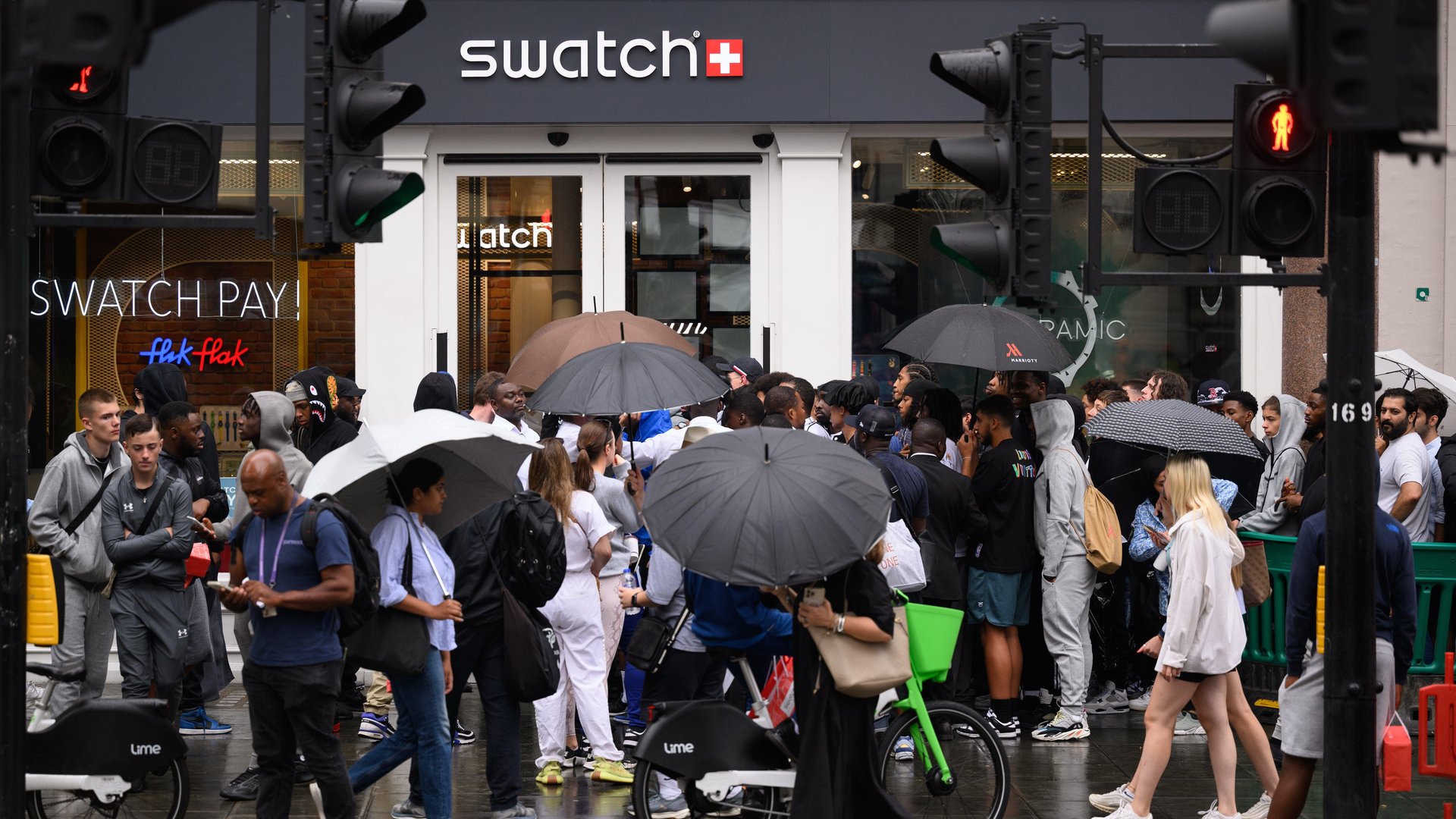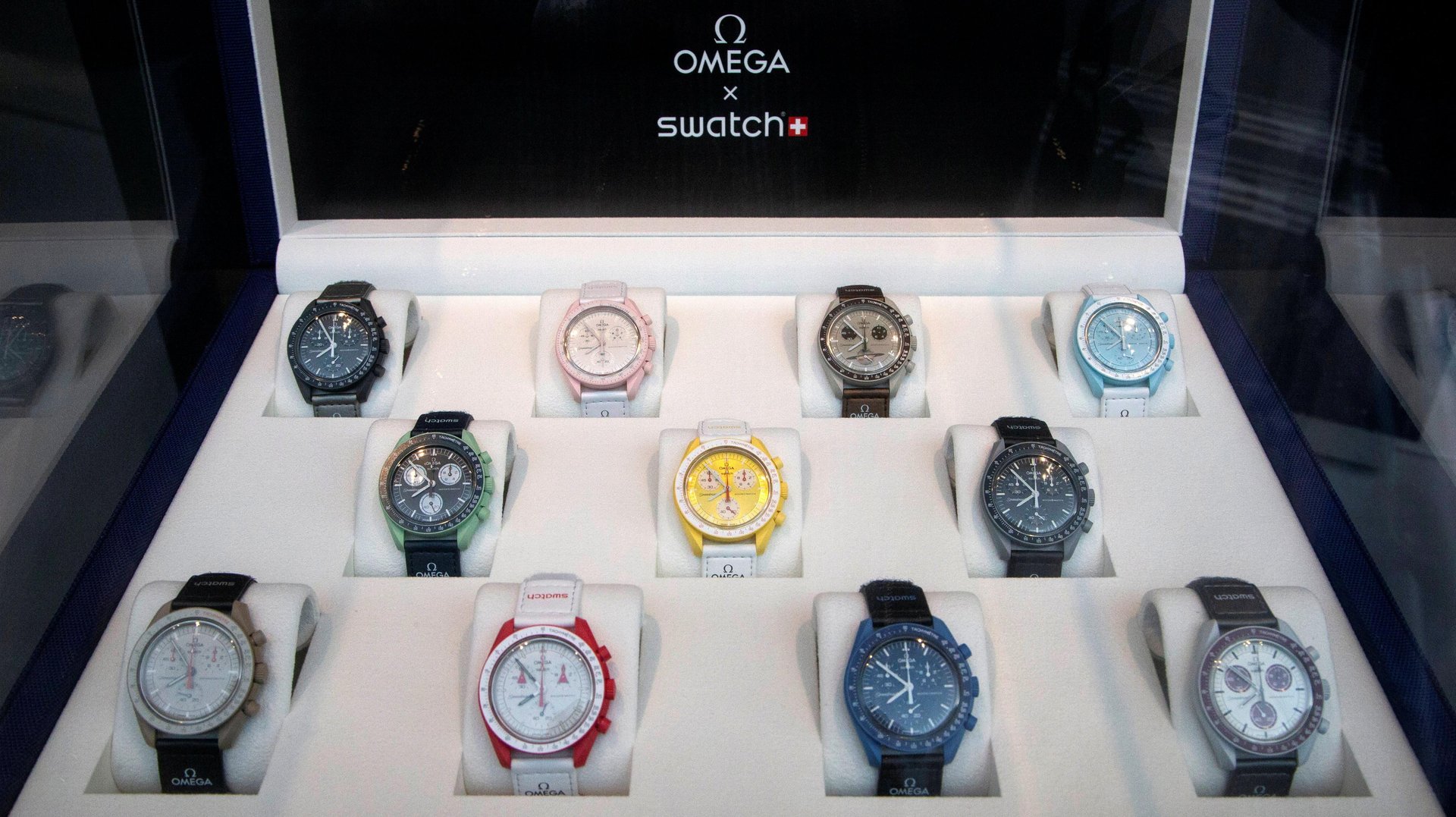Swatch’s space-themed watches are helping it recover from its pandemic stumbles
The MoonSwatch's success comes after Swatch navigated two years pandemic-related obstacles

“Oh, they’re probably giving away a watch,” is what one passerby guessed while walking past the line extending around the corner of the Swatch store in Times Square in New York City in the final week of September. But Swatch isn’t giving anything away, in fact, the company is working furiously keep up with demand for its new MoonSwatch.
The $260 watch is an “inspired by” version of the $5,000 Omega Speedmaster Moonwatch, which is famous for being the first wristwatch on the Moon when Buzz Aldrin wore it during the Apollo 11 mission in 1969.
The MoonSwatch version of the Speedmaster is made of plastic and bioceramic, comes in 11 colors, each representing one of the celestial bodies in our solar system (the Moon, the sun, and all the planets—yes, including Pluto), runs on a low-cost quartz movement, and offers no smart watch features. Still, the MoonSwatch remains relatively hard to get, despite that fact that it is not a limited edition release and was launched over seven months ago.
Why it’s still so hard to buy a MoonSwatch
The difficultly in obtaining the MoonSwatch has led to inflated resale prices on eBay and watch sites like Chrono24, where some versions of the watch are being offered for over $4,000. Part of the reason for the scarcity of the MoonSwatch has to do with Swatch’s decision to sell the watch only at its brick-and-mortar stores rather than online.
For some, the desire to purchase specific colors has led to an obsessive Pokémon Go-like hunt to find different versions of the watch in select locations at one of Swatch’s 400 international retail outlets.

In its half-year report (pdf), released in July, the Swatch Group, which includes its luxury watch subsidiary Omega, reported that the MoonSwatch helped to boost the company’s overall sales by 7.4% to roughly $3.6 billion.
“Demand [for the MoonSwatch], which is increasing daily in the markets, currently far exceeds available product,” the report states. “Shortly after delivery, these products are already sold out.” Since its release, the popularity of the MoonSwatch has also stoked new interest in the high-end version of the watch from Omega. “Omega has been confronted with supply shortages of the Speedmaster Moonwatch, after a soaring increase in demand,” the report states.
James Bond and the Tokyo Olympics couldn’t save Omega from the pandemic
The surprise hit of 2022 couldn’t have come at a better time for the Swatch Group, which had two of its luxury partnerships affected due to the covid-19 pandemic. First, the special edition James Bond Omega watch release was impacted by the delayed the release of No Time to Die, which was originally slated for November 2019, but was moved to September 2021.
Swatch is succeeding in an era when smartwatches were expected to kill the low-cost watch market
As for the MoonSwatch, not even inflation or recession fears have stemmed the tide of daily lines at Swatch stores full of people still looking to buy. The achievement is even more notable given that as recently as 2019, Apple’s smartwatch outsold the entire Swiss watch industry, according to research firm Strategy Analytics.
The Swatch Group is now leaning further into the success of its space-themed resurgence. On Sept. 27, the company released the $6,400 Omega Speedmaster X-33 Marstimer, which simultaneously displays the correct time on Earth and Mars.